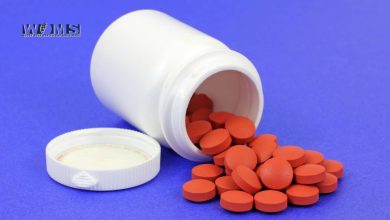What is NAD Therapy and What Are Its Benefits?

This has the potential to be quite the triggering topic for many, but it is a conversation that needs to be had. Luckily, thoughts have certainly changed about addiction and the methods used to treat it over the years. Especially thinking about addiction as a public health issue as opposed to one that is criminalized. By definition, addiction is a treatable, chronic medical disease involving complex interactions among brain circuits, genetics, the environment, and an individual’s life experiences. Historically, there have been accounts of the results of addiction from as far back as ancient Greece, and maybe even further back than that. In fact, the argument could be made for as long as there have been recorded accounts of human life, there have been instances of humans using the mind and mood-altering substances and their subsequent lack of control after enjoying excess. The problem with all highs, however, is that there will undoubtedly be lows. And when there are the lows, that is when people start to chase highs and start the cycle all over again. This cycle is commonly referred to as addiction. It is the inability to stop using a substance, or substances, even though it is causing psychological and physical harm. Unfortunately, even if a person were to show the certain strength needed to attempt to break away from this unhealthy process, they would have to deal with withdrawal – an unfortunate symptom-laden reaction to detoxification. These substances and their withdrawal reactions range from:
- Alcohol – being a depressant, slows down the messages traveling between the brain and body. After drinking alcohol and attempting a withdrawal is quite difficult because the body has to get used to functioning without it. Because of this, the body might suffer serious after effects like sweating, tremors, nausea, seizures, hallucinations, or even death.
- Cocaine – as a stimulant, speeds up messages traveling between the brain and body. The withdrawal from this drug happens in three stages. Crash - feelings of depression or anxiety, Withdrawal - cocaine cravings, lack of energy, inability to feel pleasure, and Extinction – the listed withdrawal symptoms lasting for months before subsiding.
- Heroin – elicit a range of responses within the body; from feelings of pain relief to relaxation, pleasure and contentment. Withdrawal symptoms usually start within 6 to 24 hours after the last dose and usually last for about a week – but can sometimes last up to ten days. Days 1 to 3 will be the worst. Cravings for heroin, restlessness, irritability, anxiety, depression, and crying are only a few of the symptoms of withdrawal from heroin.
Those three substances are all prone to be abused by many, however, they are not the only ones as there are a myriad of things that a person could get addicted to. It is quite fortunate that there are several ways to attempt to combat withdrawal and its symptoms. One of the newer ways is called NAD therapy and it can be implemented in particular ways and specific benefits that need to be explored.
What is NAD Therapy?
Nicotinamide adenine dinucleotide (NAD) therapy is defined as the process of administering lab-produced NAD that is aimed to boost the levels of the chemical in someone’s body. NAD is a coenzyme of Vitamin B3 that activates reactions after binding to protein molecules. Although NAD is also a naturally occurring coenzyme of niacin that helps cells in our bodies produce energy the body needs to be administered more NAD to sustain a satisfactory level. This type of therapy could be found at places like NAD therapy Century City, NAD treatment center Boca Raton, and Joy Wellness Partners San Diego all across the United States of America. The overarching reason why replenishing a body’s NAD levels is considered particularly important is because there is some belief that people who naturally produce less NAD are more likely to develop an addiction and potentially suffer from dual diagnoses. A dual diagnosis is when someone not only has addiction problems but also has to deal with co-occurring mental or behavioral conditions. This diagnosis is particularly important as most of the time the addiction part is addressed while the mental health condition goes without treatment. The mental health conditions often linked to addiction include the following: Post-traumatic stress disorder (PTSD), Obsessive-compulsive disorder (OCD), Bipolar disorder, Attention-deficit hyperactivity disorder (ADHD), and Depression.
What Is The Process Behind NAD Therapy?
The idea is to avoid having the coenzyme being possibly digested, so it has to be absorbed in a way in the body that avoids the stomach. So the NAD is placed in an intravenous (IV) tube and slowly dripped into the bloodstream; it then travels directly to the brain. From there it is said to have a myriad of effects, starting with a general boost of energy and an overall increase of awareness for the recipient of the treatment. There are also more benefits that have been realized over the relatively short time, the NAD therapy treatment process has been available to the general public. The following are only a few of the more homogeneous ones.
Benefits of NAD Therapy
- Promoting healthy skin, hair, and nails – NAD therapy helps to stimulate cell regeneration in these areas of the body.
- Maintaining or achieving a healthy weight – NAD helps with metabolism and metabolic processes supporting any weight management process.
- Dealing with withdrawal symptoms – NAD has become known for fighting addiction or substance abuse especially the symptoms that set in as people try to part with the substance or behavior they were addicted to.
- Increasing cognitive function – NAD treatments are known to improve a person’s focus, mental clarity, and memory.
- Reduce pain and discomfort – NAD has a major benefit in that it reduces pain and inflammation. NAD can help the body produce antioxidants and capture free radical oxygen molecules, which damage tissues if left unaddressed.
- Slows the aging process – Ageing is associated with decreased NAD levels that promote aging-related diseases. And so, restoring a person’s NAD levels has emerged as a therapeutic approach to treating aging-related diseases and restoring health and vigor during the aging process.




